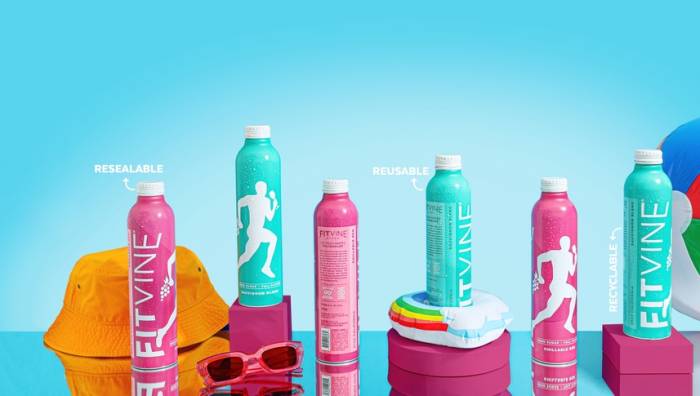Wine Industry Embraces Alternative Packaging Amid Environmental and Consumer Shifts
Aluminum, recycled PET, paper bottles, and lighter glass gain traction as brands target sustainability and younger, convenience-focused drinkers.
2025-10-06

Wine packaging is undergoing significant changes as winemakers and retailers respond to environmental concerns and shifting consumer preferences. While glass bottles remain the standard for most wines, a growing number of brands are exploring alternative materials and formats to reduce their carbon footprint and appeal to new audiences.
In January 2024, Bogle Family Wine Collection launched Element[AL] Wines in 750-milliliter aluminum bottles. The company’s vice president of consumer relations, Jody Bogle, explained that the move was driven by a desire to address the environmental impact of traditional glass bottles, which are widely recognized as the largest contributor to wine’s carbon footprint. The aluminum bottles are lightweight, fully recyclable, and shaped like classic wine bottles, aiming to combine tradition with sustainability.
O’Neill Vintners & Distillers soon followed with aluminum packaging for its FitVine line. Blaire Fraser, vice president of marketing, said the resealable and unbreakable bottles target consumers who enjoy wine in outdoor or active settings. The company hopes to reach “outdoor enthusiasts and urban adventurers” by offering a convenient option that also supports their sustainability goals.
Retailers are also experimenting with new packaging. In late September 2024, Albertsons Companies introduced Bee Lightly, a private label wine packaged in flat, 100% recycled PET bottles. These bottles are 87% lighter than glass and allow nearly double the number of units per shipping pallet, reducing transportation emissions. Brandon Brown, senior vice president of Own Brands at Albertsons, highlighted the partnership as an example of the company’s commitment to environmental stewardship.
Bonny Doon Vineyard took a different approach with its Carbon…Nay! wine, available exclusively at Whole Foods Market since May 2024. The wine comes in a paper bottle made by FrugalPac, featuring a paperboard exterior and an internal PET pouch. Kara Chavez from Whole Foods said the packaging aligns with customer expectations for sustainability and transparency.
Despite these innovations, glass bottles still dominate the market. Phillip Cleveland of Ste. Michelle Wine Estates noted that glass is seen as traditional and elegant, especially for formal occasions or gifts. However, he added that consumers aged 25-49 are more open to alternatives like cans or boxes, particularly for casual or outdoor use.
Boxed wine remains popular in larger formats such as three-liter boxes. Kathy Pryce from Delicato Family Wines reported continued growth in this segment and rising interest in smaller tetra packs and single-serve cans. Ste. Michelle’s 14 Hands brand has found success with canned wines, while Precept Wines has long offered its House Wine label in both boxes and cans. Alex Evans, Precept’s chief marketing officer, said these formats appeal especially to younger consumers and those new to wine.
Retailers have observed varying levels of acceptance for alternative packaging. Adithya Bathena of Buy-Rite Liquors in New Jersey said three-liter boxes gained popularity during the pandemic but noted that larger jugs and boxes are declining in sales. Cans remain popular for specific occasions like concerts or travel but have not replaced glass bottles for most customers. Josh Minton at Twin Liquors in Austin saw growth in small formats but no major shift away from glass overall. Jim Shpall of Applejack Wine & Spirits in Colorado said canned wine sells well but most customers still prefer traditional bottles.
Some wineries are making less visible changes by reducing the weight of their glass bottles rather than switching materials entirely. Precept Wines is transitioning much of its portfolio to lighter-weight glass molds as part of a broader sustainability effort. Browne Family Vineyards has reduced bottle weight by 31% since 2022 through its Browne Forest Project initiative with One Tree Planted, also using label-free bottles and responsibly sourced cartons.
Cuvaison winery in Napa Valley began using custom lightweight bottles last year, cutting bottle weight by 27% and eliminating foil capsules. President Daniel Zepponi cited estimates that up to two-thirds of the industry’s carbon footprint comes from glass packaging and transport. Many California wineries have adopted similar measures as part of their push toward carbon neutrality.
Retailers say most consumers do not notice or mind lighter bottles, though some believe heavier glass still signals higher quality for premium wines. Minton at Twin Liquors acknowledged that younger buyers care more about environmental impact than bottle weight or heft.
Transparency is another area where wineries are making changes. Sokol Blosser Winery began adding nutrition and ingredient information to its back labels last year to meet growing demand for product transparency among younger consumers. Precept Wines is following suit by including calorie counts on each can of House Wine.
The wine industry’s move toward alternative packaging is driven by both environmental concerns and evolving consumer habits. While glass remains dominant—especially for traditional occasions—aluminum bottles, recycled PET containers, paper-based packaging, boxes, tetra packs, and cans are gaining ground among younger drinkers and those seeking convenience or sustainability. As more brands experiment with new formats and materials, the landscape of wine packaging continues to evolve across the United States.
Founded in 2007, Vinetur® is a registered trademark of VGSC S.L. with a long history in the wine industry.
VGSC, S.L. with VAT number B70255591 is a spanish company legally registered in the Commercial Register of the city of Santiago de Compostela, with registration number: Bulletin 181, Reference 356049 in Volume 13, Page 107, Section 6, Sheet 45028, Entry 2.
Email: [email protected]
Headquarters and offices located in Vilagarcia de Arousa, Spain.